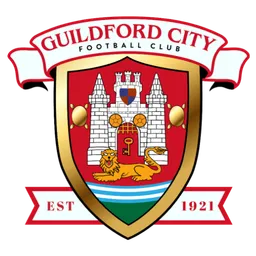Guildford City Football Club, nicknamed “The Sweeney,” is a non-league football club based in Guildford, Surrey.
Established in 1921, they currently compete in the Cherry Red Records Combined Counties Premier Division South, which is part of the ninth tier of English football. The team calls Spectrum Football Ground their home ground.
The origins of professional football in Guildford can be traced back to the formation of Guildford United in 1921. After a successful charity match in 1920, local businessmen established the club, securing a home ground through the donation of land by Mr. W. Triggs-Turner, who became the first chairman. Guildford United, later renamed Guildford City in 1928, joined the Southern League and played their inaugural match in August 1921, winning 2-0 against Reading Reserves. The club’s early years were modest until their 1928 FA Cup run, where they notably defeated Queens Park Rangers before losing to Bournemouth in the second round.
The 1930s brought both challenges and successes. Financial difficulties in 1936 led to a public outcry and the addition of new directors, preventing the sale of their ground. Manager Haydn Green, appointed in 1936, turned the team’s fortunes around, leading them to their first Southern League Championship in 1937-38. Key players like Jimmy Brown and Stan Denby were instrumental in this success, with Brown scoring 38 goals in the league. Despite financial and wartime interruptions, the club continued to achieve notable results, including a memorable FA Cup victory over Reading and a strong league performance.
Post-World War II, Guildford City saw a mix of successes and struggles. The team had a strong season in 1946, finishing as Southern League runners-up. However, the 1950s and 1960s were marked by fluctuations in performance. The club secured a second Southern League Championship in 1955-56 and had notable FA Cup runs, including a memorable match against Gateshead in 1951-52. Despite financial difficulties and eventual relegation in the late 1960s, the club managed a brief resurgence, winning the Southern League Division One in 1970-71. However, ongoing financial issues and the sale of their ground in 1969 led to the club’s decline and eventual dissolution in the mid-1970s.
